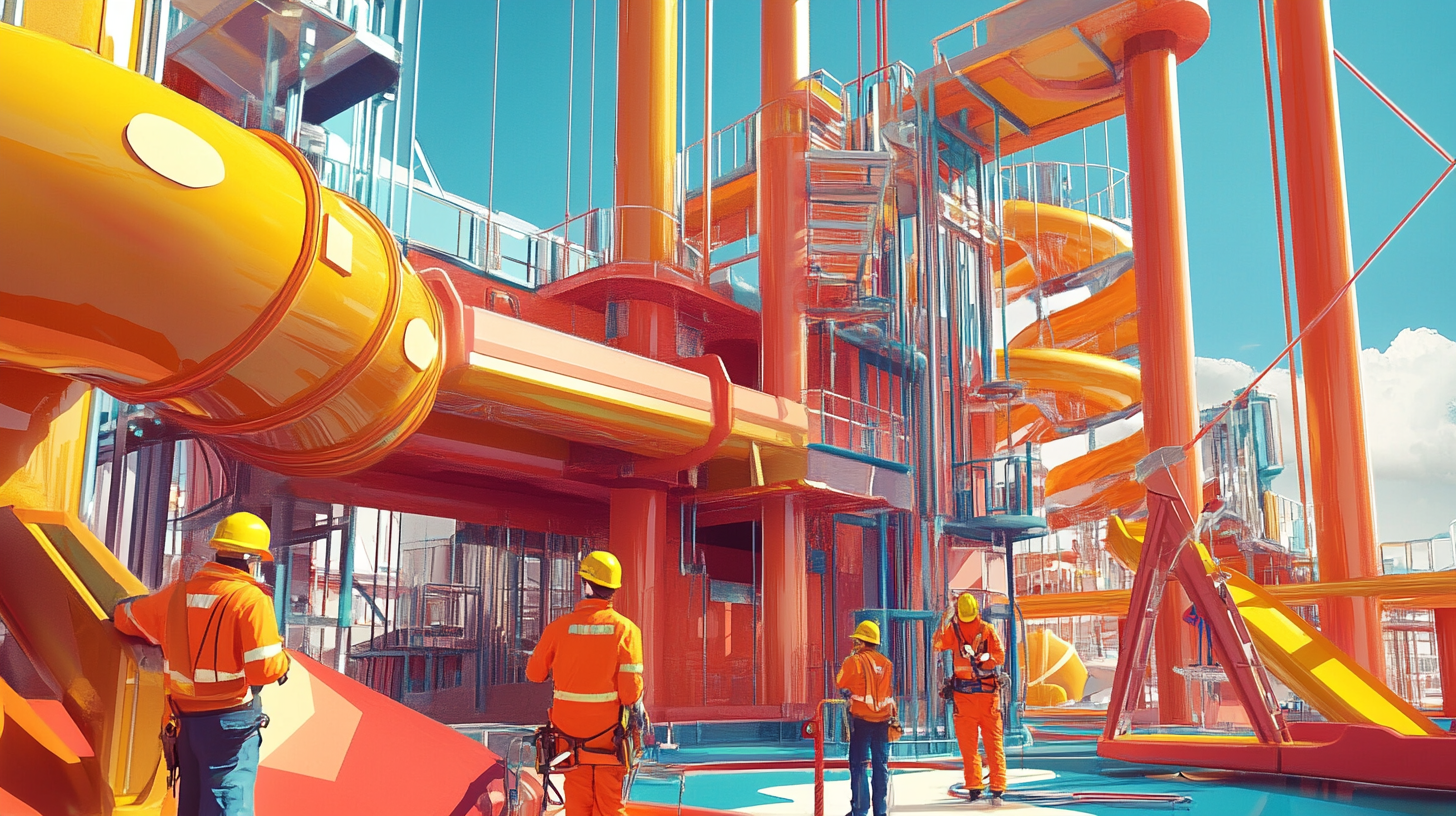Infographics
Safe, Secure, and Playful: 100 Essential Maintenance Tips for 2025
Playgrounds are more than just spaces for recreation—they are places where children learn, grow, and build memories. Ensuring these environments remain safe, accessible, and enjoyable is essential for facility managers, parents, and communities alike.
This guide provides a comprehensive checklist of 100 preventative maintenance actions that will help you maintain your commercial playground in top condition throughout 2025. From surfacing and equipment integrity to accessibility and proactive monitoring, each section highlights actionable steps to keep your playground safe, secure, and compliant with the latest standards.
Whether you’re preparing for seasonal changes, conducting routine inspections, or addressing accessibility needs, these tips will equip you with the knowledge to create a safe and engaging play environment for all.
SURFACING
- Check for proper depth of impact-absorbing material.
- Rake loose-fill materials to ensure even distribution.
- Replace worn or compacted surfacing.
- Remove debris, glass, and litter.
- Inspect for erosion under high-traffic areas.
- Ensure rubber mats are secure and free of gaps.
- Verify surfacing material extends beyond fall zones.
- Test surfacing for impact absorption annually.
- Repair any torn or damaged unitary surfacing.
- Confirm surfacing is free from standing water.
- Tighten loose bolts and screws.
- Check for rust or corrosion on metal parts.
- Inspect wooden components for splinters or decay.
- Replace worn or frayed cables.
- Ensure chains on swings are intact and not stretched.
- Lubricate moving parts to prevent squeaking or sticking.
- Test slides for structural stability.
- Look for cracks or fractures in plastic equipment.
- Ensure climbing ropes are securely attached.
- Replace broken or missing hardware immediately.
- Confirm all equipment is securely anchored.
- Inspect footings for signs of movement or instability.
- Check for cracks in concrete supports.
- Test balance beams and bridges for sturdiness.
- Monitor for signs of leaning or tilting structures.
- Repaint rust-prone areas as needed.
- Verify the integrity of welds on metal structures.
- Ensure posts are not loosening from the ground.
- Replace damaged handrails or guardrails.
- Reinforce weak connections.
- Verify that fall zones meet minimum clearance requirements.
- Remove objects encroaching on fall zones.
- Test swing clearance for proper height and distance.
- Ensure fall zones extend double the height of the tallest equipment.
- Repair depressions caused by repetitive landings.
- Monitor zones around spinning equipment for wear.
- Refill impact materials regularly.
- Test for adequate spacing between equipment.
- Clear vegetation or roots invading fall zones.
- Ensure adequate drainage in fall zones.
- Confirm ramps are secure and unobstructed.
- Ensure pathways are free from cracks and debris.
- Test adaptive equipment for functionality.
- Verify compliance with ADA guidelines.
- Provide accessible surfacing options.
- Repair uneven transitions between surfacing materials.
- Check accessible play components for wear and tear.
- Monitor for barriers in accessible routes.
- Replace damaged signage indicating accessible features.
- Maintain clear entry points.
- Conduct weekly visual inspections.
- Train staff on basic playground safety protocols.
- Post emergency contact information visibly.
- Maintain a well-stocked first aid kit.
- Install clear and visible safety signage.
- Ensure equipment is age-appropriate.
- Conduct regular safety audits.
- Create a maintenance log for tracking repairs.
- Verify no protruding bolts or sharp edges.
- Inspect for entanglement hazards.
- Trim nearby trees and branches.
- Remove potential tripping hazards like rocks and roots.
- Ensure fences or barriers are intact.
- Check gates and latches for proper function.
- Clear pathways of overgrown vegetation.
- Keep trash bins emptied regularly.
- Ensure water fountains are operational and clean.
- Verify lighting for evening use.
- Remove nearby bee or wasp nests.
- Secure bike racks and other adjacent features.
- Clear snow and ice during winter months.
- Inspect for freeze-thaw damage.
- Reapply UV-protectant coatings in summer.
- Check for heat-related wear on plastic parts.
- Ensure proper drainage after heavy rain.
- Repair storm damage promptly.
- Remove autumn leaves to prevent mold.
- Inspect for expansion or contraction damage.
- Secure covers for winter storage.
- Conduct seasonal safety reviews.
- Display updated safety rules prominently.
- Educate supervisors on equipment use.
- Enforce age-appropriate play guidelines.
- Post warnings for wet or slippery equipment.
- Provide regular safety training for staff.
- Implement a no-running policy in high-risk areas.
- Encourage proper use of safety harnesses where needed.
- Conduct drills for emergency scenarios.
- Monitor for vandalism or misuse.
- Rotate equipment usage to prevent wear in concentrated areas.
- Install cameras for security.
- Perform monthly detailed inspections.
- Engage certified playground safety inspectors annually.
- Solicit user feedback on conditions.
- Encourage reports of hazards from the community.
- Use maintenance management software.
- Set up alerts for routine maintenance tasks.
- Track equipment lifespans for timely replacements.
- Collaborate with manufacturers on safety updates.
- Maintain a dedicated budget for playground safety.
EQUIPMENT INTEGRITY
STRUCTURAL STABILITY
FALL ZONES
ACCESSIBILITY
GENERAL SAFETY
SURROUNDINGS
SEASONAL MAINTENANCE
PLAY AREA RULES
PROACTIVE MONITORING
By following these 100 preventative maintenance actions, you can ensure your commercial playground remains safe, compliant, and enjoyable for all users throughout 2025.


